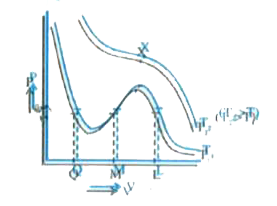In the chemical change , answer the following questions:
The species acting as oxidant and reductant respectively are: Solution in Telugu
The correct Answer is:A
Step by step video, text & image solution for In the chemical change aN_(2)H_(4)+bBrO_(3)^(-)toaN_(2)+bBr^(-)+6H_(2)O, answer the following questions: The species acting as oxidant and reductant respectively are: by Chemistry experts to help you in doubts & scoring excellent marks in Class 12 exams.
Topper's Solved these Questions
- BOOK - AAKASH SERIESCHAPTER - STOICHIOMETRYEXERCISE - LECTURE SHEET ( EXERCISE II MATRIX MATCHING TYPE QUESTIONS)2videos
STOICHIOMETRY
- BOOK - AAKASH SERIESCHAPTER - STOICHIOMETRYEXERCISE - LECTURE SHEET ( EXERCISE II INTEGER TYPE QUESTIONS)8videos
STOICHIOMETRY
- BOOK - AAKASH SERIESCHAPTER - STOICHIOMETRYEXERCISE - LECTURE SHEET ( EXERCISE II MORE THAN ONE CORRECT ANSWER TYPE QUESTIONS)4videos
STOICHIOMETRY
- BOOK - AAKASH SERIESCHAPTER - STATES OF MATTER EXERCISE - ADDITIONAL PRACTICE EXERCISE -PRACTICE SHEET (ADVANCED) (LINKED COMPREHENSION TYPE QUESTIONS) (PASSAGE- IV)2videos
STATES OF MATTER
- BOOK - AAKASH SERIESCHAPTER - SURFACE CHEMISTRYEXERCISE - Objective Excersice - 4 (ASSERTION (A)& REASON (R ) TYPE QUESTION)34videos
SURFACE CHEMISTRY
Similar Questions
Match the following columns
 05:13View Solution
05:13View SolutionThe oxidation number of iron in brown ring complexes +x. What is value of x.
01:36View SolutionThe different oxdisation state (s) exhibited by oxygen is (are)
03:31View SolutionAt a particular temperature and pressure for a real gas Van der Waal's equation can be written as:
(P+aV2m)(Vm−b)=RT

where Vm is molar volume of gas. This is cubic equation in the variable Vm and therefore for any single value of P & T there should be 3 values of Vm. Which are shown in graph as Q, M and L.
As temperature is made to increase at a certain higher temperature the three values of Vm becomes identical. The temperature, pressure & molar volume at point X are called Tc, Pc & Vc for real gas. The compressibility factor in terms of Pc, Vc and T is called Zc.
The expression of Van dcr Waal's constant 'a' can be given as03:34View Solution(A) De-emulsification is a reverse process of emulsion formation
(R ) During de-emulsification , the emulsion breaks to give oil and water.02:03View SolutionIdentify the substance acting as oxidant or reductant if any in the following: (i) AlCl_(3)+3KrarrAl+3KCl (ii) SO_(2)+2H_(2)Srarr3S+H_(2)O (iii) BaCl_(2)+Na_(2)SO_(4)rarrBaSO_(4)+2NaCl (iv) 3I_(2)+6NaOHrarrNaIO_(3)+5NaI+3H_(2)O
03:56View SolutionBalance the following chemical equation H_(2)O_(2)+O_(3) to H_(2)O+O_(2) Indicating the changes in oxidation number of oxygen, find the equivalent weight of H_(2)O_(2) for this reaction
02:29View SolutionComplete the following chemical equations : Z+ 3LiAlH_(4) rarr X + 3LiF + 3AlF_(3) : X + 6H_(2)O rarr Y + 6H_(2)
01:01View Solutionनिम्न अभिक्रियाओं में किस्मे ओजोन ऑक्सीकारक तथा किसमे अपचायक का कार्य करती है ? कारक सहित स्पष्ट कीजिए ।
PbS+4O3→PbSO4+4O2,
H2O2→H2O+2O201:26View Solutionकी इसकी ऑक्सो-संकर प्रजाति [Mo2O4(C2H4)2(H2O)2]2− में ऑक्सीकरण अवस्था क्या है ?
02:14View Solutionनिम्नलिखित अभिक्रिया, ऑक्सीकरण अथवा अपचयन, कौन-सी अभिक्रिया है ?
H2CO3→H2O+CO201:55View SolutionIn the chemical change \(aN_{2}H_{4}+bBrO_{3}^{-}\rightarrow aN_{2}+bBr^{-}+6H_{2}O\)
answer the following questions.
The species acting as oxidant and reductant respectively are
(A) \(BrO_{3}^{-},N_{2}H_{4}\)
(B) \(N_{2}H_{4},BrO_{3}^{-}\)
(C) \(N_{2},BrO_{3}^{-}\)
(D) \(Br^{-},N_{2}H_{4}\)01:15View SolutionIn the chemical change aN2H4+bBrO−3→aN2+bBr−+6H2O, answer the following questions:
The element oxidised and reduced in the reaction are respectively:05:20View SolutionIn the chemical change aN_(2)H_(4)+bBrO_(3)^(-)toaN_(2)+bBr^(-)+6H_(2)O , answer the following questions: Thenumber of electrons lost or gained during the redox change are:
View SolutionIn the chemical chagne aN2H4+bBrO−3→aN2+bBr−+6H2O, answer the following questions:
The number of electrons lost or gained during the redox change are04:27View Solution
